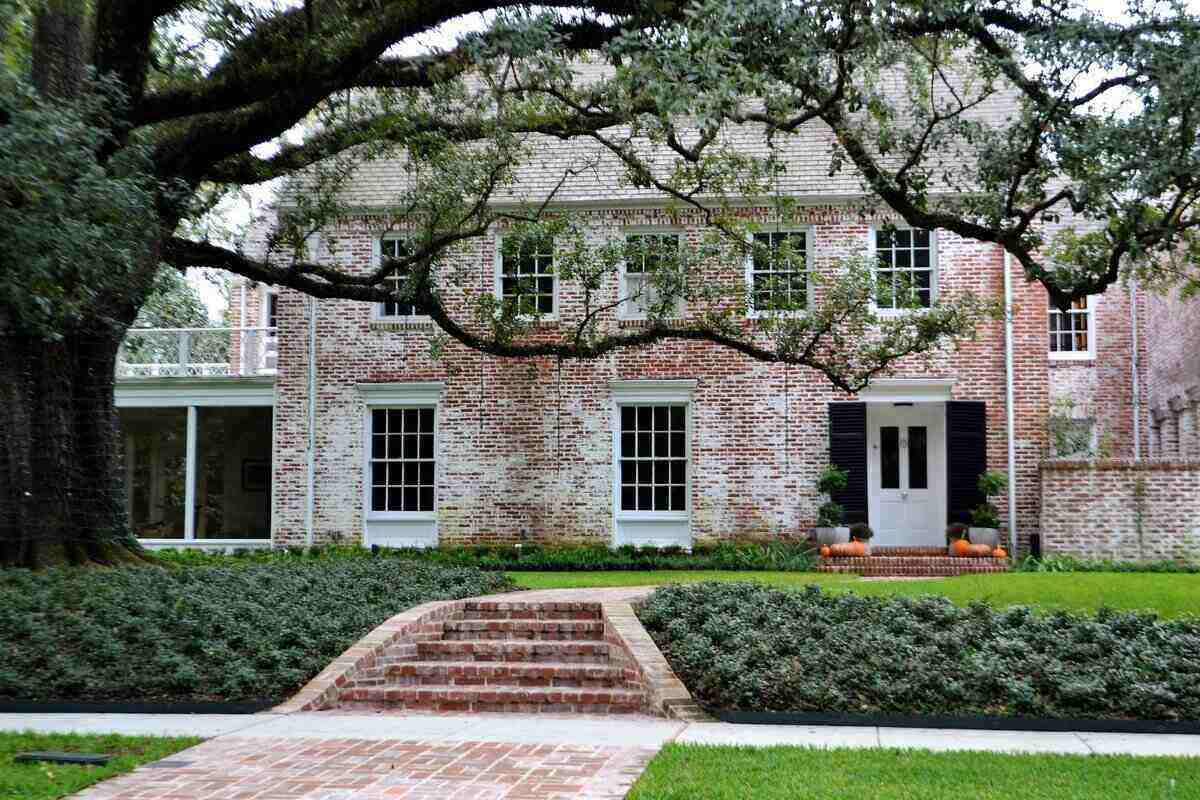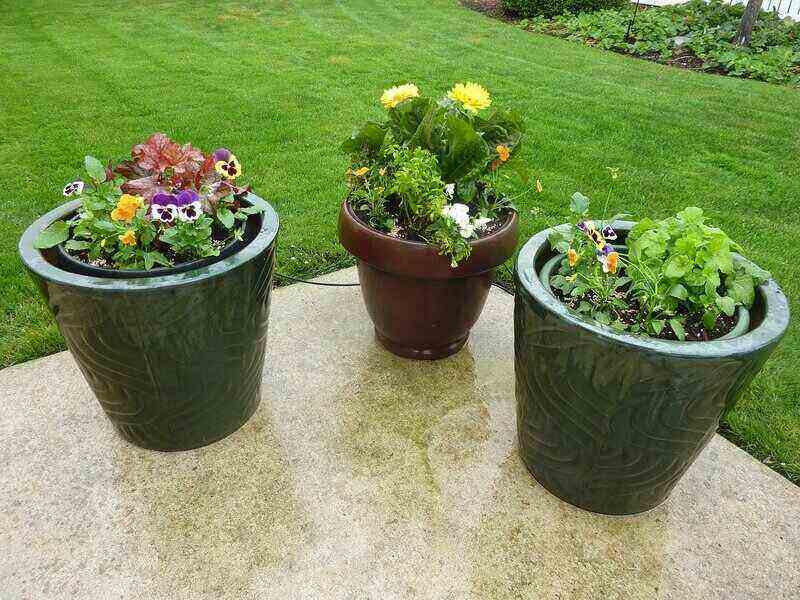
Houston, we have … a lot of problems, actually. At least, when it comes to landscaping. The hot, humid summers here can be too harsh for some plants, flooding can damage yards and drown roots, and many species won’t tolerate this area’s heavy clay soils. If caring for your yard is wearing you out, try these 12 low-maintenance landscaping ideas for your Houston yard.
Here are 12 low-maintenance ideas for your Houston landscaping:
- Go Artificial
- Give Ground Cover a Chance
- Helpful Hardscapes for Houston
- Take Texas Natives for a Spin
- Evergreen Living
- The Power of Perennials
- Help Yourself and the Environment With a Rain Garden
- Get Water-Wise With Xeriscaping
- Container Gardens: Think Inside the Pot
- Houston Rock-Ets
- Don’t Get Irritated — Get Irrigated
- No Such Thing As Too Much Mulch
- FAQ About Low-Maintenance Landscaping in Houston
1. Go Artificial

We’ll start with maybe the most obvious solution for someone who doesn’t want to deal with lawn care: artificial grass. With artificial grass, you won’t ever have to worry about mowing or watering your lawn. You also won’t have to worry about flooding or excessive heat killing your grass.
Here’s why: Artificial grass survives many conditions that living grass won’t, from natural disasters to frequent trampling from pets or children. While it can get expensive to install and isn’t the best for the environment, artificial grass is one of the most durable and low-maintenance features you can add to your landscape.
2. Give Ground Cover a Chance

If you don’t like the idea of a fake lawn but also don’t like the idea of having to mow your grass during the hot Houston summer either, there’s another alternative. Instead of grass, you could use a ground cover plant in your lawn. Ground covers are alive and lush, but they don’t require mowing.
There are many kinds and colors of ground cover. Some are simply green like traditional grass, while others bloom through part of the year with colorful flowers. Ground cover plants that do well in Houston’s USDA Hardiness Zone (9a) include:
- Bugleweed
- Mondo grass
- Periwinkle (pictured)
3. Helpful Hardscapes for Houston

Hardscapes can increase your property’s value while decreasing the amount of time you spend doing yard work. Hardscaping is any non-living element in your lawn, including:
- Patios
- Decks
- Pathways
- Retaining walls
- Gazebos
The only maintenance most hardscapes require is occasional cleaning, and they take up space in your yard that would otherwise have grass or plants that need care.
When you install hardscapes made with pavers or flagstone, make sure you lay a solid foundation. If you don’t, flooding and other issues in the future can easily cause the stones to shift, turning your landscape into a mess you’ll have to work hard to clean up.
4. Take Texas Natives for a Spin

If you’re looking for low-maintenance landscape plants, you’ve got to go native. Native Texas flowers, shrubs, trees, and other plants will need less care than non-natives. That’s because these plants already know how to survive Houston’s climate without extra watering, fertilizing, or pest control from you.
Some popular Houston flower bed ideas with native plants:
- Lantana (pictured)
- Beautyberry
- Texas paintbrush
5. Evergreen Living

Along with native plants, evergreens are a low-maintenance option for your plant beds. Evergreen shrubs, trees, vines, and ground covers keep their leaves year-round, so they won’t turn your yard into a blanket of fallen leaves come autumn.
There are many different types of evergreens that would grow well in your Houston landscape:
- American holly (pictured)
- Cherry laurel
- Several varieties of palm trees.
6. The Power of Perennials

Perennials are yet another low-maintenance plant option for your garden and flower beds. What makes perennials so great is that they come back every year on their own with no help from you. That means you’ll have a healthy, colorful landscape year after year without having to plant new flowers.
Some of the best perennials for Houston’s climate include:
- Butterfly weed
- Yarro
- Daffodils (pictured)
7. Help Yourself and the Environment With a Rain Garden

A rain garden is easier to tend than a traditional garden because it collects stormwater runoff, essentially watering itself. Once you’ve built and established your rain garden, it won’t need much help from you to thrive.
Adding a rain garden to your property isn’t purely selfish, though. It’s also a relatively easy way to help your local environment since rain gardens filter out pollutants from rainwater before it returns to lakes, rivers, and other natural bodies of water.
Preventing any kind of pollution is a good look, especially for Houston, which is already one of the most ozone-polluted cities in the country.
8. Get Water-Wise With Xeriscaping

Xeriscaping is another low-maintenance alternative to a traditional garden. Why? Xeriscapes survive on very little water. You’ll rarely (if ever) have to worry about watering a xeriscaped yard with features such as stone, succulents, and other drought-tolerant plants.
Common plants in Texas xeriscapes include:
- Desert willows
- Gulf muhly
- Red yucca
9. Container Gardens: Think Inside the Pot

If you, like many homeowners, aren’t a big fan of getting on your knees in the dirt to take care of your garden, consider decorating your landscape with a container garden.
Container gardens feature plants in pots, boxes, bags, or more creative containers. They can look just as beautiful as a traditional garden, but they’re much easier to tend to, especially for people with limited mobility.
With a container garden, you also can plant more tropical specimens than you could put in the ground. During cold snaps, you simply bring your potted plants inside to protect them from freezing. You won’t have to deal with covering plants or other frost protection methods.
10. Houston Rock-Ets

A rock garden is exactly what it sounds like: a garden primarily filled with stones, boulders, and gravel instead of plants. It’s sort of like the pet rock you kept as a kid: it serves the same purpose as the living version but with none of the work.
All those gardening issues Houston has won’t bother a rock garden. Heavy clay soil, intense heat, and flooding can’t kill rocks because they aren’t alive. You can design your rock garden however you want without worrying about proper placement or maintenance.
11. Don’t Get Irritated – Get Irrigated
A water-wise landscape might not be for you, but that doesn’t mean you have to tie yourself to a watering schedule. With an automatic irrigation system, all you have to do is set a timer and let the sprinklers handle the rest. They’ll water your lawn and garden for you while you take care of your more important business (or relax indoors where there’s air conditioning).
Though installing irrigation systems is usually an expensive project, it can be worth the high price tag since sprinklers make your landscape more low-maintenance and increase your home’s property value.
12. No Such Thing As Too Much Mulch

Mulch is the aesthetic backbone of most manicured landscape beds, but it has more to offer than just a pretty surface. Mulch suppresses weeds and helps plants retain moisture at the roots. With mulch in your garden, you’ll spend much less time weeding.
If you use organic mulch (wood chips, bark, etc), you’ll have to replace it each spring because organic mulch will break down into the soil, adding nutrients. Inorganic mulch (rocks, rubber, etc), on the other hand, usually won’t need replacing for several years.To put down another block to weeds, consider installing landscape fabric or another weed barrier under your mulch.
FAQ About Low-Maintenance Landscaping in Houston
Here are six tips on landscaping cheaply in Houston:
• Find free mulch.
• Install ground cover instead of grass.
• Use pea gravel for your landscaping. Pea gravel is an affordable groundcover option, with costs that average $39 per ton or $46 per cubic yard.
• Create a walkway.
• Make a rock garden.
• Repurpose items for planters.
Many low-maintenance landscaping techniques will be cheaper than standard landscaping because they help you use less water and won’t have you replacing plants often since natives are naturally low maintenance once established. Of course, you can also save money by installing your landscape DIY-style instead of hiring a professional.
Plants native to Houston will require less maintenance than non-natives. Some of the best plants for Houston landscaping include:
• Carolina jessamine: a flowering vine that does well in partial shade to full sun.
• Gulf muhly: a hardy ornamental grass that loves full sun.
• Black-eyed susan: a bright flower great for pollinators that loves full sun.
For more information on Houston native plants, see the Lady Bird Johnson Wildflower Center’s list of recommended landscape plants for East Texas.
Shrubs are a loved plant choice for their low maintenance. They are perennials as well, meaning they will come back each season. Some of the best shrubs for Houston are:
• Texas Lantana: a drought-tolerant, multi-colored flowering shrub.
• Blue Mistflower: bright blue or violet bunch flowers.
• Wax Mallow: a broad shrub with bright red hibiscus-like flowers.
When to Call a Landscaping Professional
For help designing and installing your low-maintenance landscape, consider hiring a local Houston landscaping expert. Pro landscapers know how to build more complicated projects like outdoor living spaces, and they also have expert knowledge on the best plants for your property’s specific conditions.
Many landscaping contractors even go beyond designing and installing. They can regularly maintain your landscape for you. That way, you won’t have to spend your precious time working in the yard yourself.
Don’t make landscaping harder than it needs to be. Balance out everything that makes gardening in Houston difficult with the 12 low-maintenance landscaping ideas above.
Main Photo Credit: ArtisticOperations / Pixabay